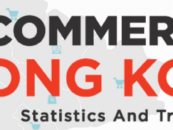In the pulsating heart of Asia’s world city, against a backdrop where the vibrant skyline mirrors the dynamism of its financial markets, credit cards stand as the undisputed monarchs of the retail payments ecosystem.
Commanding a majority share of 51 percent in total Gross Merchandise Value (GMV), their reign is not merely about facilitating transactions but fundamentally shaping the essence of consumer spending.
This preeminence is a testament to the significant role credit cards play in facilitating daily consumer transactions and bolstering the revenue base of local banking institutions.
Despite their entrenched position, the credit card sector in Hong Kong confronts a triad of structural challenges that threaten its sustained dominance and profitability.
The Quinlan & Associates report explores the Hong Kong credit card market’s complexities, revealing issues of saturation, underutilisation, and high churn rates. Through detailed statistical analysis and strategic insights, it identifies the challenges facing the sector and suggests actionable strategies to address these concerns.
The predicament of plenitude

While robust, the credit card market faces three significant challenges: market saturation, underutilisation, and high churn rates. These challenges are symptomatic of deeper issues within the industry, such as aggressive competition, evolving consumer preferences, and the broader economic environment.
With a 39 percent increase in cards in circulation reaching 19.5 million by 2023, the Hong Kong credit card market is saturated. This growth trajectory has notably outpaced other developed markets in the Asia-Pacific region, positioning Hong Kong as a leader in credit card penetration per capita.

The competition for market share has led issuers to flood the market, paradoxically undermining credit cards’ value proposition.
Despite this proliferation, the market’s saturation has ushered in underutilisation issues and high churn, signifying a mismatch between the abundance of available credit cards and their actual, effective use by consumers.
Underutilisation and high churn
The phenomenon of underutilisation starkly contrasts with the market’s saturation. Despite the increase in local credit card spending, the annualised growth rate of spending per card has barely edged past the inflation rate.
This trend points to a conspicuous underutilisation of credit cards, with their spending per card lagging behind other regional developed markets, excluding South Korea.
Compounding this issue is the exceptionally high churn rate observed within the industry. The card issuance and termination cycle reflect a considerable wastage, with approximately 85 percent of new cards being terminated annually.
This high churn rate, coupled with the significant costs associated with customer acquisition and the protracted breakeven period for new signups, underscores the inefficiencies plaguing the local credit card industry.
The plethora of available cards does not equate to their active use. Factors such as consumer preference for cash in specific segments, the availability of alternative digital payment methods, and perhaps a lack of compelling incentives for card use play into this trend.
Beyond acquisition to engaging offers
In their quest to attract new users and retain existing customers, credit card issuers have traditionally leaned heavily on a suite of incentives such as cashbacks, rebates, rewards programs, and various benefits and privileges.
While effective in garnering initial interest, these strategies underscore a broader, acquisition-centric approach that often overlooks the potential of credit card deals. Quinlan & Associates’ analysis reveals that despite the richness of benefits offered, a significant opportunity lies in the underutilised domain of merchant deals.

While issuers extensively promote signup rewards ranging from substantial cash rebates to exclusive membership privileges across various platforms, including comparison websites like MoneyHero, MoneySmart, and HongKongCard, merchant-specific deals seldom receive the spotlight.
This gap in promotion highlights a critical area for strategic realignment, suggesting that enhancing the visibility and appeal of credit card deals could drive higher card usage and foster deeper customer engagement and loyalty.
The untapped potential of merchant deals
In Hong Kong, 74 percent of consumers view credit card deals as essential, highlighting their importance in choosing a credit card. By optimising these deals, issuers could unlock an extra HK$ 66 billion in retail spending, potentially boosting their revenues by HK$ 2.9 billion, with HK$ 2,102 million from fees and HK$ 769 million from interest.
Amidst the array of strategies to bolster card usage and loyalty, merchant deals stand out as a notably underleveraged tool. A critical analysis reveals a glaring oversight in leveraging merchant deals to drive spending. Despite the availability of over 6,200 deals, consumer awareness remains disappointingly low.

This misalignment represents a missed opportunity for banks to engage consumers more effectively, driving spending and loyalty. Strategic rethinking towards making these deals more accessible and relevant can transform them from mere perks to powerful motivators of card usage.
Despite merchant deals’ potential to drive consumer spending, several hurdles remain. These include low deal awareness, lack of proximity to the point of sale (POS), and deal-specific usage frictions, which collectively hinder the effective capitalisation of these opportunities.
The path to unlocking merchant deals’ full potential involves a concerted effort to enhance their visibility. Leveraging digital platforms for targeted marketing, integrating offers directly into the online banking experience, and employing data analytics to personalise deals can dramatically increase their uptake.

The evolution of the credit card market demands innovative approaches to partnership. The industry can create an ecosystem of fostering collaborations that align the interests of banks, merchants, and fintech companies. These partnerships can facilitate more attractive deals and a seamless consumer experience that encourages repeated use.
In addition, regulatory frameworks must keep pace with innovation. Policies that encourage data sharing under strict privacy protections can enable the creation of more personalised and appealing offers. Additionally, understanding the broader economic trends that influence consumer spending can guide more effective market strategies.
Addressing these challenges necessitates a strategic realignment, improving deal visibility, forging targeted partnerships, and enhancing the customer experience.
Toward a future of strategic growth
The credit card market in Hong Kong stands at a crossroads, faced with the dual challenge of navigating its current predicaments while unlocking the latent potential within its operational model.
Issuers can surmount the prevailing challenges and bolster their revenue streams by shifting focus towards optimising merchant deals and aligning strategies to consumer spending habits.
This strategic pivot, rooted in a deep understanding of consumer behaviour and market dynamics, promises a revitalised pathway for the credit card industry in Hong Kong, ensuring its sustained growth and relevance in the evolving landscape of retail banking.









